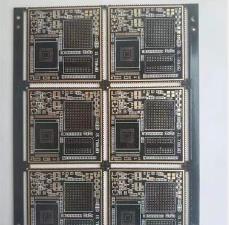1.1 Flexibility
A significant advantage of the application of flexibleFPC is that it can be more convenient to wire and install in three-dimensional space, and it can also be rolled or folded for use. As long as it is curled within the allowable radius of curvature, it can withstand thousands to tens of thousands of times without being damaged.
1.2 Reduce volume
In the assembly and connection of components, the conductor cross-section of the flexible PCB is thinner and flat compared to the use of conductive cables, which reduces the size of the wire and can be formed along the casing, making the structure of the device more compact and reasonable, and reducing the size of the assembly. volume. Compared with rigid PCB, space can be saved by 60~90%.
1.3 Weight reduction
In the same volume, the flexible PCB can be reduced by about 70% compared with the wire and cable under the same current carrying capacity. Compared with the rigid PCB, the weight can be reduced by about 90%.
1.4 The consistency of the installation

The flexible PCB is used to install the connection, which eliminates errors when wiring with wires and cables. As long as the processing drawings are proofread and passed, all the winding circuits produced later will be the same. There will be no wrong connection when installing the cable.
1.5 increases reliability
When a flexible PCB is used for assembly and connection, because it can be routed on the three planes of X, Y, and Z, the transfer interconnection is reduced, the reliability of the entire system is increased, and the inspection of faults provides convenience.
1.6 Electrical parameter design controllability
According to application requirements, designers can control capacitance, inductance, characteristic impedance, delay and attenuation when designing flexible PCBs. Can be designed to have the characteristics of a transmission line. Because these parameters are related to wire width, thickness, spacing, insulating layer thickness, dielectric constant, loss tangent, etc., it is difficult to do this when using wire cables.
1.7 The end can be soldered as a whole
Flexible PCB, like rigid PCB, has terminal pads, which can eliminate wire stripping and tinning, thus saving costs. The terminal pads are connected to the components, devices, and plugs. Dip soldering or wave soldering can be used to replace the manual soldering of each wire.
1.8 materials can be used
Flexible PCB can be manufactured with different base materials according to different requirements. For example, polyester film can be used in assembly applications that require low cost. In demanding applications, excellent performance is required, and polyimide film can be used.
1.9 low cost
Use flexible PCB to install the connection, which can reduce the total cost. This is because:
1) Due to the consistency of the various parameters of the flexible PCB wires; the overall termination is implemented, which eliminates the errors and rework that often occur when the cable wires are installed and connected, and the replacement of the flexible PCB is more convenient.
2) The application of flexible PCB simplifies the structural design. It can be directly adhered to the component, reducing the clamp and its fixing parts.
3) For wires that need to be shielded, flexible PCBs are cheaper.
1.10 Processing continuity
Since the flexible foil-clad laminate can be continuously supplied in rolls, continuous production of FPC proofing can be realized. This also helps reduce costs.
2. shortcoming
2.1 High one-time initial cost
Since flexible PCBs are designed and manufactured for special applications, the initial circuit design, wiring, and photographic plates require higher costs. Unless there is a special need to apply a flexible PCB, it is usually best not to use it for a small number of applications.
2.2 It is difficult to change and repair flexible PCB
Once the flexible PCB is made, it must be changed from the base map or the light drawing program, so it is not easy to change. The surface is covered with a protective film, which must be removed before repair and restored after repair, which is a relatively difficult task.
2.3 Size is restricted
Flexible PCBs are usually manufactured by batch process when they are not yet common, so they cannot be made very long and wide due to the limitation of the size of the production equipment.
2.4 Improper operation is easy to damage
Improper operation of the assembly and connection personnel can easily cause damage to the flexible circuit, and its soldering and rework need to be operated by trained personnel.